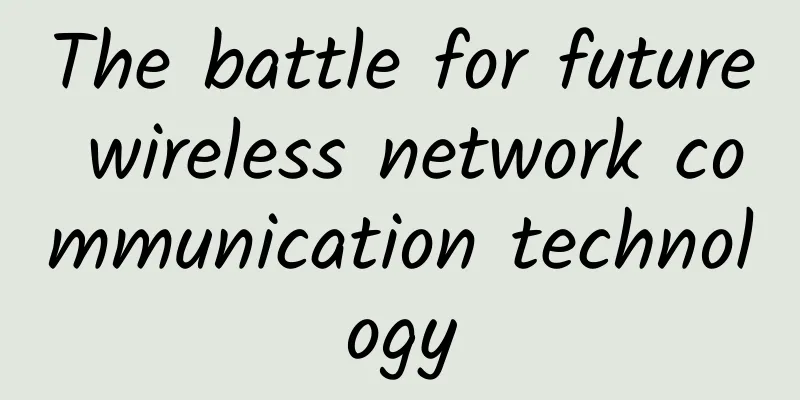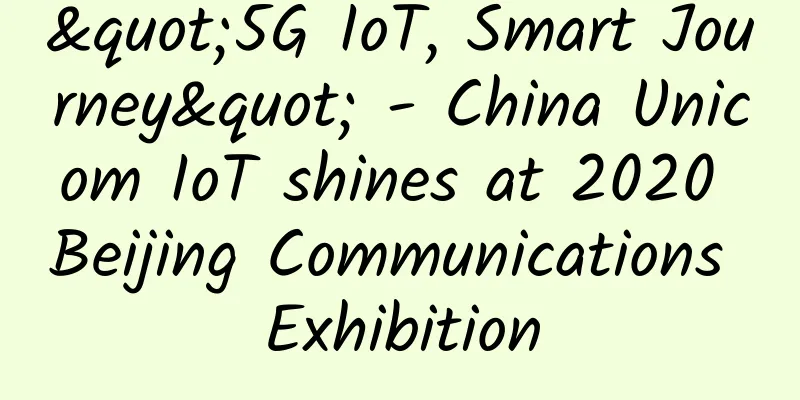The battle for future wireless network communication technology

|
Wireless communication is closely related to our work and life. Since everyone uses mobile phones, wireless networks are indispensable. There are two ways to access the Internet via mobile phone:
The two technologies complement and restrict each other. Both have achieved faster technological updates and development, and are moving in a higher and faster direction.
As a result, we soon saw the emergence of 5G, which is the fifth-generation mobile communication technology standard. 5G has a theoretical downlink speed of 10GB and a download speed of up to 1.25GB, which is more than 100 times that of 4G. A high-definition movie can be downloaded in 1 second using a 5G network, greatly improving the wireless network bandwidth. In 2017, the international communications standards organization 3GPP officially announced the 5G standard version, and major operators quickly launched related tests for 5G communications. 5G technology has been included in the government work report for two consecutive years, and the development of the 5G industry must be vigorously promoted. In 2018, the three major domestic operators opened 5G test sites in multiple cities, and basically determined to implement 5G technology in 2019 for commercial use. The government continues to require operators to reduce users' mobile phone communication costs, mainly referring to the 3G/4G networks currently commonly used by users. Operators build 5G networks and provide 5G networks for users with strong bandwidth needs, thereby obtaining higher communication fee income, thereby making up for the loss of 3G/4G network tariff reduction. All parts of the world have also invested a lot of resources in the research and commercialization of 5G. China has caught up with the level of other developed countries in 3G/4G network construction. It is most likely to surpass other countries in 5G and become the leader in the actual commercialization of 5G. It is not easy to reach such a height. If you think that the future of wireless communication is 5G, you are totally wrong. There is also a new technology in the Wi-Fi field, which is faster than 5G, or even 6G (in theory), that is terahertz technology, which is 10 times faster than the communication speed of 5G. Everyone says that 5G is super fast. It takes 10 minutes to download a high-definition movie on 4G, but 5G can do it in one second! Terahertz is 100 times faster than 5G, with a speed of more than 50Gbps. In fact, terahertz was formally proposed as early as the late 19th century. Terahertz has electromagnetic radiation of 100GHz to 10THz (5G is in the 3-5GHz frequency band), with a wavelength in the range of 0.03mm to 3mm. Due to this frequency band, it is neither completely suitable for processing with optical theory nor completely suitable for research with microwave theory, so the research results and data involving the terahertz band are very limited and have been simply classified as far-infrared. With the development of technology, the electromagnetic wave source and light source are more stable, and terahertz waves can be effectively applied. Of course, compared with 5G, terahertz technology has many technical problems to be solved. It is still a laboratory technology and commercial use is not expected. This is because: the frequency band of terahertz waves in the atmospheric transmission process is not stable enough. Even if the frequency band is stably controlled, it is difficult to find a suitable modulation technology to control the band within the current technical range; in addition, due to the low carrier power of the terahertz wave communication signal source, the terahertz wave must be indirectly modulated to achieve information transmission, and this technology has not been effectively implemented; in addition, although in theory, the transmission stability of terahertz waves is very high, it cannot fully meet the needs of commercial and popular applications. Insufficient frequency, insufficient transmission performance, and immature modulation and detection technology have become major bottlenecks in the development of terahertz wave communication technology. Only by overcoming all these technical problems can terahertz be truly commercialized on a large scale. The future battle of wireless network communication technology will be between 5G and terahertz technology. In terms of technological maturity, 5G has entered trial commercial use and its technological maturity has been improved, but its speed cannot be compared with terahertz. If 5G is implemented tomorrow, there will be less and less room for Wi-Fi to develop. The original advantage of Wi-Fi is that the bandwidth in the local area network is higher than the bandwidth of 3G/4G. After 5G is launched, it will surpass the bandwidth of Wi-Fi. If Wi-Fi cannot improve the bandwidth based on the original technology, Wi-Fi technology will soon die. Introducing terahertz technology into the local area network will be a bold attempt. Although terahertz is more suitable for space communication, it can also be applied to the local area network. The local area network has a short transmission distance, which is just suitable for high-frequency communication protocols, giving terahertz technology room to play. As early as 2004, terahertz was rated as one of the "Top Ten Technologies That Will Change the Future World" by the United States. In 2005, it was listed as the first of the "Top Ten Key Strategic Goals of the National Pillar" by Japan. The reason why it was later surpassed by 5G and stole the limelight is that the theory of terahertz technology is too advanced and the specific implementation is difficult, so it has been slow to open up. It can be said that terahertz is not yet a rival to 5G, but it still has a chance to compete with 6G and even 7G. 6G is the sixth generation of communication technology, and the theoretical download speed can reach 1TB per second. 7G is the seventh generation of communication technology, which refers to 6G+ satellite network that can realize space roaming. Many people believe that terahertz technology is likely to become the technical foundation of 6G/7G communications, and the two wireless technologies will eventually merge. It is not difficult to find that many technologies are now integrated when they develop to the highest level, restricting and promoting each other, just like people can only achieve common development by cooperating, and the same is true in the field of technology. When the differences between the two wireless technologies become smaller and smaller, they will gradually merge. |
<<: Feiyuxing Wireless helps Wuhan Tilisaer complete panoramic coverage of office buildings
>>: Operators implement unlimited packages. Netizens: Old users and dogs are not allowed to apply
Recommend
NIO implements chat room: everything starts with the basics of network programming!
1. Write at the beginning Hello everyone, I'm...
Knowledge Popularization | 7 Deployment Solutions for 5G Private Networks
[[315546]] What is 5G private network? 5G private...
Do we really need 5G? Key facts you need to know
First, 2G was used for calling and texting, then,...
SASE vs. SD-WAN: Which one do you pick?
SASE (Secure Access Service Edge) and SD-WAN are ...
Special offer of $46.6/year package for restocking, optional CN2 GIA (DC6/DC9)/Japan SoftBank, etc.
Bandwagonhost restocked its first special annual ...
Maxthon Hosting 20% off, Hong Kong High Defense VPS monthly payment starts from 160 yuan, 20-50Gbps protection, dual IP
There are many merchants selling Hong Kong VPS, b...
Why is the 5G signal weaker than 4G?
The advent of 5G technology promises lightning-fa...
GINERNET: €19.95/year - 1GB/10G NVMe/1TB/Spain VPS
Is there anyone who needs a Spanish VPS? GINERNET...
5 Network Troubleshooting Software, Which One Do You Use?
By using a handy network troubleshooting app, you...
Introduce the commonly used encoders and decoders in Netty
[[359182]] The previous article introduced Netty ...
spinservers: US high bandwidth servers starting from $89/month, San Jose/Dallas data centers, 10Gbps bandwidth
spinservers recently released a new promotion pla...
A Brief Analysis of TSN Time Sensitive Network Technology
With the continuous development of industrial int...
Why is the WiFi signal full but the internet speed is still slow?
I believe many of my friends have encountered suc...
Let's talk about UPNP and DLNA protocols
Preface There is no love, only technology. Let me...
NTT provides one-stop overall solution for international schools based on Cisco digital network architecture
The tide of digitalization has already affected e...









